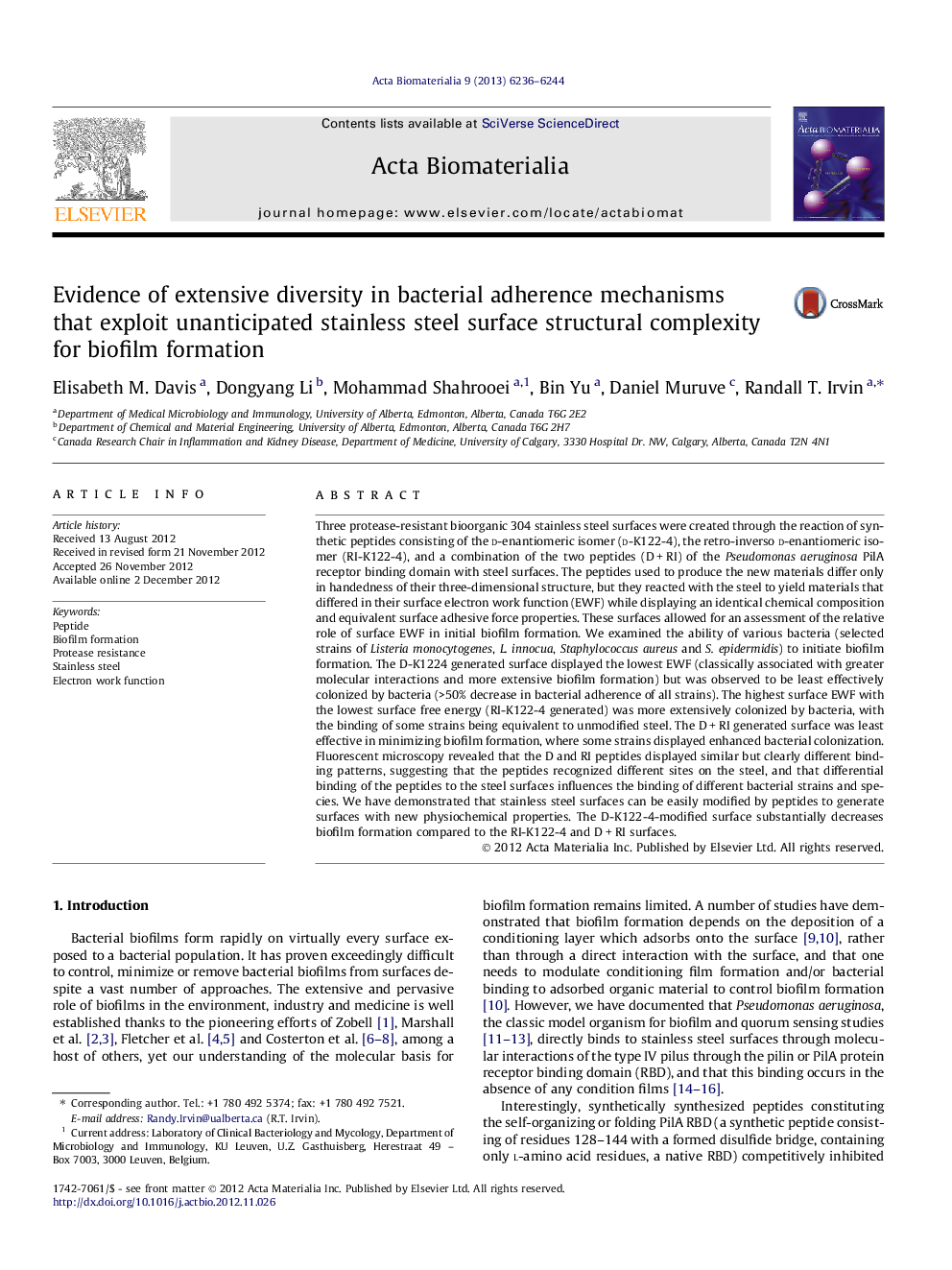| Article ID | Journal | Published Year | Pages | File Type |
|---|---|---|---|---|
| 10159880 | Acta Biomaterialia | 2013 | 9 Pages |
Abstract
Three protease-resistant bioorganic 304 stainless steel surfaces were created through the reaction of synthetic peptides consisting of the d-enantiomeric isomer (d-K122-4), the retro-inverso d-enantiomeric isomer (RI-K122-4), and a combination of the two peptides (DÂ +Â RI) of the Pseudomonas aeruginosa PilA receptor binding domain with steel surfaces. The peptides used to produce the new materials differ only in handedness of their three-dimensional structure, but they reacted with the steel to yield materials that differed in their surface electron work function (EWF) while displaying an identical chemical composition and equivalent surface adhesive force properties. These surfaces allowed for an assessment of the relative role of surface EWF in initial biofilm formation. We examined the ability of various bacteria (selected strains of Listeria monocytogenes, L. innocua, Staphylococcus aureus and S. epidermidis) to initiate biofilm formation. The D-K1224 generated surface displayed the lowest EWF (classically associated with greater molecular interactions and more extensive biofilm formation) but was observed to be least effectively colonized by bacteria (>50% decrease in bacterial adherence of all strains). The highest surface EWF with the lowest surface free energy (RI-K122-4 generated) was more extensively colonized by bacteria, with the binding of some strains being equivalent to unmodified steel. The DÂ +Â RI generated surface was least effective in minimizing biofilm formation, where some strains displayed enhanced bacterial colonization. Fluorescent microscopy revealed that the D and RI peptides displayed similar but clearly different binding patterns, suggesting that the peptides recognized different sites on the steel, and that differential binding of the peptides to the steel surfaces influences the binding of different bacterial strains and species. We have demonstrated that stainless steel surfaces can be easily modified by peptides to generate surfaces with new physiochemical properties. The D-K122-4-modified surface substantially decreases biofilm formation compared to the RI-K122-4 and DÂ +Â RI surfaces.
Related Topics
Physical Sciences and Engineering
Chemical Engineering
Bioengineering
Authors
Elisabeth M. Davis, Dongyang Li, Mohammad Shahrooei, Bin Yu, Daniel Muruve, Randall T. Irvin,
